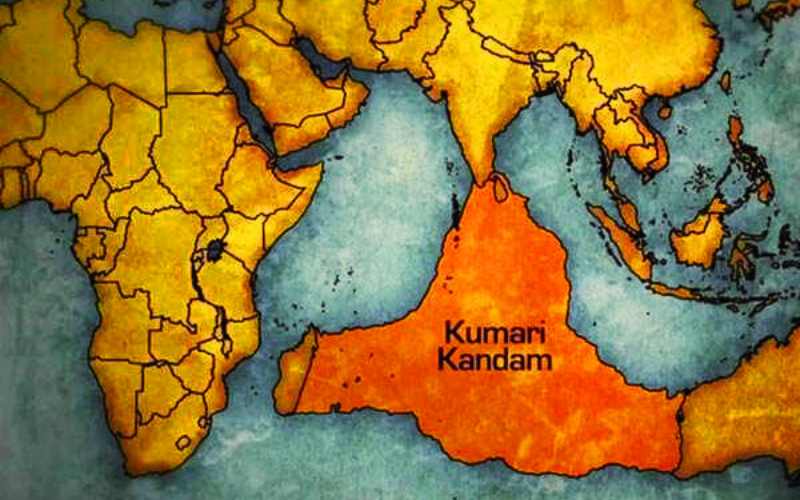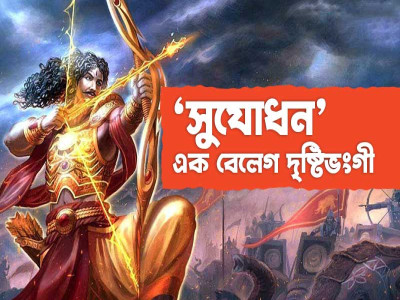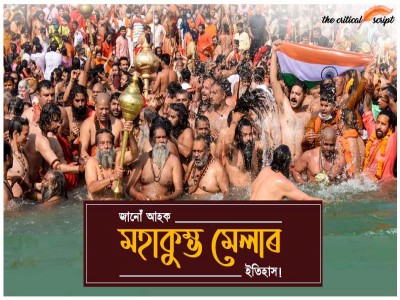
Kumari Kandam: A Journey through Tamil Mythology and Cultural Identity
The legend of Kumari Kandam, a mythical lost continent submerged beneath the Indian Ocean, has long captivated the imagination of the Tamil people. Rooted in ancient texts and embellished by Tamil revivalists in the 19th and 20th centuries, Kumari Kandam represents more than just a tale of a sunken land—it symbolizes Tamil cultural identity, heritage, and pride. In this article, we embark on a journey through time and mythology to explore the origins, evolution, and significance of the myth of Kumari Kandam.
The concept of Kumari Kandam finds its
earliest mention in the 15th-century Tamil religious epic, Kanda Puranam, a
15th-century Tamil version of the Skanda Purana, written by Kachiappa
Sivacharyara (1350–1420). Initially, it was linked to
the mythical land of Lemuria by Tamil revivalists in the 19th century, as
colonial India grappled with questions about the existence of a lost continent.
Over time, the term "Kumari Kandam" gained prominence, supplanting
"Lemuria" in the collective consciousness of Tamil society. This
shift reflects a deliberate effort to reclaim Tamil heritage and assert its
significance in the narrative of human civilization.
According to Tamil mythology, Kumari Kandam was a vast and prosperous civilization located south of present-day India, extending from the southern tip of the Indian subcontinent to modern Sri Lanka. However, a series of catastrophic events, including floods, earthquakes, and volcanic eruptions, led to the submersion of Kumari Kandam beneath the ocean—a phenomenon referred to as "Kadal Kol" in Tamil, meaning "ocean engulfment."
Kumari Kandam holds profound cultural
significance in Tamil society, serving as a cornerstone of Tamil identity and
pride. Tamil revivalists in the 20th century portrayed it as the cradle of
Tamil culture and language, associating it with the organization of the first
two Tamil Sangams and asserting that the Pandiyan kings once ruled over the
entire Indian subcontinent. This nationalist interpretation of Kumari Kandam
elevates it beyond mere mythology, positioning it as a foundational element of
Tamil civilization.
One significant aspect of Kumari Kandam is its breadth, described in ancient texts as spanning 700 kavatam (a unit of measurement) south of Cape Cameron. Within this expansive territory, Kumari Kandam is said to have comprised 49 principalities, each governed by its ruler or king. These principalities likely represented distinct political and administrative entities within the larger civilization of Kumari Kandam.
The story of Kumari Kandam is laden with nationalistic sentiments, evoking pride in Tamil heritage and civilization. Many believe that the Pandiyan kings' purported rule over the Indian subcontinent and the assertion of Tamil civilization as one of the oldest in the world bolster Tamil nationalism. The myth of Kumari Kandam serves as a rallying cry for Tamil identity, fostering a sense of unity and solidarity among Tamils worldwide. Another intriguing aspect of the Kumari Kandam myth is its connection to Adam's Bridge, also known as Rama's Bridge or Rama Setu. Initially believed to be a natural formation, recent satellite images have fueled speculation about its origins, with some interpreting it as the remnants of a submerged bridge linking mainland India to Sri Lanka—a notion that aligns with the mythical narrative of Kumari Kandam and its association with ancient Tamil legends and epics.
The legend of Kumari Kandam transcends its mythical origins to become a potent symbol of Tamil cultural identity, heritage, and pride. Whether viewed as a historical fact or symbolic allegory, Kumari Kandam inspires fascination, curiosity, and nationalistic fervor among the Tamil people. As we unravel the myth of Kumari Kandam, we gain insight into the enduring power of mythology in shaping collective identity and historical narratives.
Disclaimer: The opinions expressed in this article are those of the author's. They do not purport to reflect the opinions or views of The Critical Script or its editor.

Newsletter!!!
Subscribe to our weekly Newsletter and stay tuned.

















Related Comments